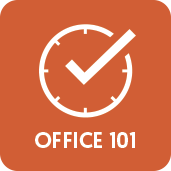Microsoft Excel definitions for common terms
Not sure of the difference between a workbook and a worksheet? How do you know if a cell is active or not? You're not alone. Knowing the terms used in Excel is knowing the possibilities in Excel.


The rewards for mastering Microsoft Excel are numerous, though the first steps may be intimidating. Some may get lost in the spreadsheet jargon and may end up more confused that when they first started. Let's take a look at some of the most common terminology you'll come across as an Excel user.
Microsoft Excel terminology
- Workbook — The workbook refers to an Excel spreadsheet file. The workbook houses all of the data that you have entered and allows you to sort or calculate the results. A workbook that is available to be viewed and edited by multiple users on a network is known as a Shared Workbook.
- Worksheet — Within the workbook is where you'll find documents called worksheets. Also known as spreadsheets, you can have multiple worksheets nestled in a workbook. Tabs at the bottom of the of the screen will indicate which of your worksheets you are currently working on. This is also known as an active worksheet or active sheet.
- Cell — A cell is a rectangle or block housed in a worksheet. Any data that you want to enter into your worksheet must be placed in a cell. Cells can be color coded, display text, numbers and the results of calculations, based on what you want to accomplish. An Active Cell is one that is currently opened for editing.
- Columns and Rows — Columns and Rows refer to how your cells are aligned. Columns are aligned vertically while rows are aligned horizontally.
- Column and Row headings — These headings are the lettered and numbered gray areas found just outside of columns and rows. Clicking on a heading will select the entire row or column. You can also alter the row height or column width using the headings.
- Workspace — Much like worksheets in a workbook, a workspace allows you to open numerous files simultaneously.
- Ribbon — Above the workbook is a section of command tabs called the Ribbon. A multitude of options are found behind each tab of the ribbon
- Cell Reference — A cell reference is a set of coordinates that identifies a specific cell. It's a combination of letters and numbers. A5, for example, would point to the cell located where column A and row 5 intersect.
- Cell Range — A Cell range is a collection of cells that have been identified as a group based on a variety of criteria. By using a colon (:) between cell references, Excel can determine the range, also known as an array. A range in a row, for example, could look like A1:C1, telling the formula to look at the cells in a row between A1 and C1, while B4:D9 would tell the formula to look at all cells in a box bounded by columns B and D and rows 4 and 9. A 3-D reference refers to a range that encompasses more than one worksheet in the same workbook.
- Merged Cell — When two or more cells are combined, it's become what is known as a merged cell.
- Template — A template is a formatted workbook or worksheet designed to help users fulfill a specific need in Excel. Examples of this include stock analysis, process map, and calendar.
- Operator — Operators are symbols or signs that indicate which calculation must be made in an expression. Operators do not necessarily refer to simple mathematical types; comparison, text concatenation or reference operators also exist.
- Formula — A sequence inside a cell that is used to produce a value. It must begin with an equal (=) sign. This could be a mathematical equation, cell references, functions or operator. A formula is also known as an expression.
- Formula Bar — Nestled between the ribbon and workbook, the Formula Bar will display the contents of an active cell. In the case of formulas, the formula bar will display all components of the formula.
- Function — Functions are formulas that are pre-built into Excel. They are designed to help simplify potentially complex formulas in a worksheet.
- Error Code — Error Codes appear if Excel finds a problem with a provided formula.
- Cell Formatting — This is the act of changing the in which cell data is displayed in the spreadsheet. When you format cells, only the visual appearance of the cells is changed; the value within the cells remain constant.
- Conditional Formatting — Formatting is applied only when the cell meets determined criteria such as duplicate values or values above or below a threshold.
- Filter — Filters are rules that you can employ to decide which rows in a worksheet to display. These filters can use data such as conditions or values.
- Freeze Panes — Freezing Panes allows you to select specific columns and/or rows to remain visible on the worksheet, even if you are scrolling, such as header cells that label a column.
- AutoFill — This enables you to effortless copy data to more than one cell.
- AutoSum — This feature will add up the numbers you have entered in your sheet and displays the total in a cell of your choosing.
- AutoFormat — This is an automated format application to cells that match pre-determined criteria. This could be as simple as font alignment and size.
- Data Validation — This feature helps to prevent incorrect data from being entered into your worksheet. This most commonly used to create drop-down lists for common terms. Data validation promotes consistency and accuracy in the data to be entered.
- Pivot Table — This is a data summarization tool most commonly used to sort, average to sum up data automatically. The information is pulled from one table while the results are displayed in another. Pivot Tables makes it easy to retrieve specific information from a large source of data.
- Pivot Chart — This type of chart provides a visual aid for pivot tables. By providing graphical representations of the pivot table data, the user can provide a level of interactivity with the data.
- Pivot Area — The pivot area is a point on the worksheet where you would drag a Pivot Table field in order to reorganize how a report is displayed.
- Source Data — This is the information used to create your pivot table. It can either exist within the worksheet or from and an external database.
- Values Area — In a pivot table, Value areas are identified as the cells that contain the summary information.
- Item — These are sub-categories of fields in your pivot table. If you have a field that is marked State, the items could be Alabama, Alaska and so on.
Wrapping up
While they are so many other Microsoft Excel terms to cover, the above list will get you on the right track to becoming a table titan. Which terms did you stumble over when you first started using Excel? Are there any other terms that you would suggest for this list? Let us know!
- Microsoft Office 101: Help, how-tos and tutorials
Get the Windows Central Newsletter
All the latest news, reviews, and guides for Windows and Xbox diehards.

